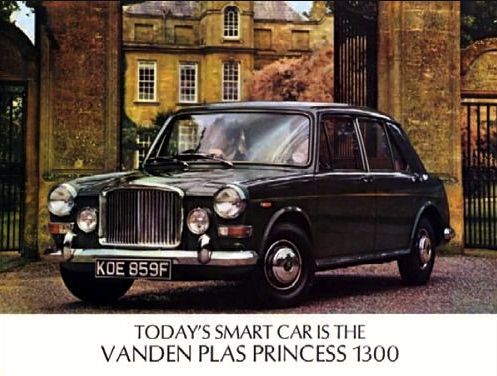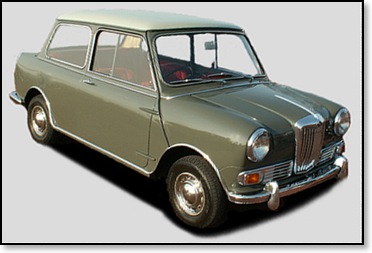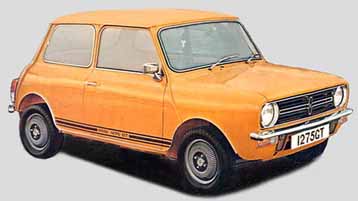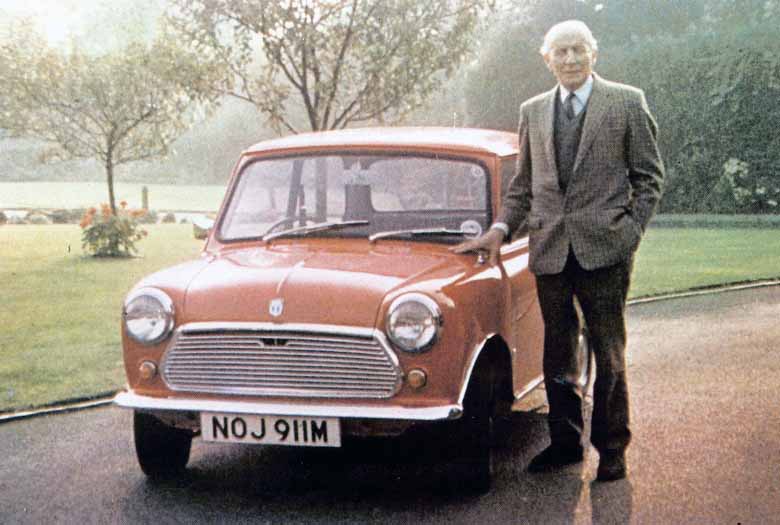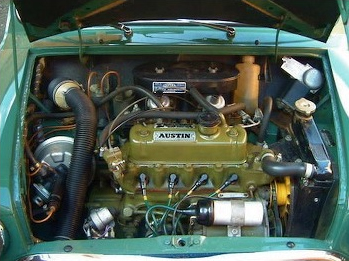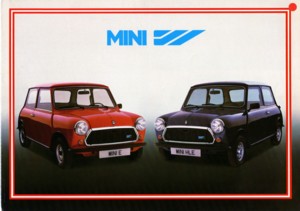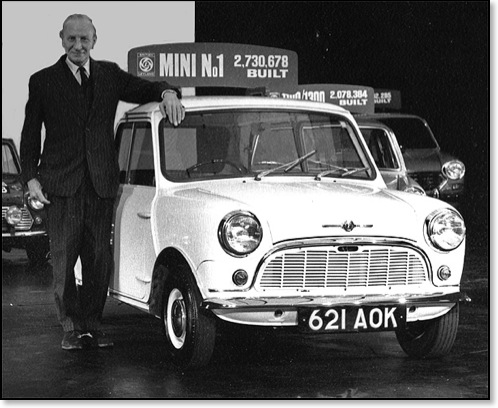ブロードスピード ミニ

|
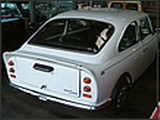 |
当社マーズ・スピードUKで制作した復刻版が上の写真の車で、“マーズ・スピード GTO1300”と名付けました。これは1,300ccインジェクションの旧ミニの新車をベースにしたものです。オリジナルのブロードスピード ミニGTクーぺでは、改造リア部分はグラスファイバー製でしたがマーズ・スピード1300GTOはスチール製です。
ブロードスピードに関する資料を見つけましたので 本文と翻訳文をご紹介します。

翻訳文
ブロードスピード・エンジニアリング・リミテッドは、チューンアップ・ワークスとして1962年にラルフ・ブロード氏によって設立された会社である。1960年代から70年代を通じて、ブロードスピード・チームは英国南部ワーウィックシャーに基盤を置き、ミニ・クーパー、フォード・アングリア、エスコート、カプリ、トライアンフ・ドロマイト・スプリント等のレース活動で活躍していた。
1966年、ブロード スピード エンジニアリングはミニ・クーパー・SをベースとしたブロードスピードGTクーペを製作し、やがてこのモデルはミニ・アストンとして知られていった。そして、同社はBMC(ブリティッシュ・モーター・カンパニー)の英国中部地区のメイン・エージェントとなった。
元々、このGTクーペはラルフ・ブロードによって、英国内にて限定台数で製造されたものだった。彼は、ミニをベースとしてファストバック(ルーフからリア・テール後端までが流線形になった構造)に改造し、レースで成功をおさめていた。大きな特徴としては、カム・テールが大きく延長されている点で、これは当時、空気抵抗を抑えるために必須の形と考えられていた。ボディ・シェルのルーフとリアエンドはファイバーグラス製で、鉄骨フレームで補強されていた。その結果、かなりの軽量化に成功した。しかし、発表当時、自動車評論家たちの評価は低かった。彼らには組み上げの点でも、仕上がりの点でも、このGTクーペは魅力的な車には見えなかったのだ。しかし、ブライアン・フォーリーの手による量産化に際して、その問題も一気に解決することとなる。
フォーリーはエントリー・モデルとしてデラックスを、そしてクーパーSの装備品を用いて2+2Sを製造した。更に、スーパー・デラックスとして、改造型エンジン搭載モデルを製造した。その改造型エンジンは、ヘッドが10.5:1、ビッグ・カム1-1/2 SUツインキャブで、90馬力、最高回転数は従来の6500回転から8000回転まで上げられた。改造しないことが条件ではあったものの、このモデルにはBMCの完全保証が付けられていた。しかし、このGTSは扱いが難しい車になってしまった。確かに、このモデルはミニの一段階上を行くもので、やかましいのが欠点ではあるものの、吸いつくようなグリップと野性的な加速によってまるでロケットのような車に仕上がったが、ロード・カーとしてはオーバースペックだったのだ。しかし、レースカーとしては最速ラップを叩き出し続け、やがて、その成功は伝説的なものとなっていった。
ダッシュボードに付けられているメータは、スピードメーターが150mph(時速240km)用、タコメーターは10,000回転用で、ここからも、このモデルが普通のミニではなかったことが分かる。足回りは1275クーパーSのユニットが用いられており、あと250オーストラリアドルを追加すればブロードスピードにチューン・アップすることができた。つまり、ヘッドの交換(エクゾースト・バルブの大型化、圧縮比10.5:1)、エクゾースト・マニホールドの改造、それにやブロードスピード製のロードまたはレース用カムシャフトへの変更である。また、エクゾースト・パイプは両サイドから突き出る形になっている。
残念ながら現在では、このモデルはほとんど残っておらず、ミニのバリエーションの中でも最も希少価値のあるもののうちの一つになっている。ラルフ・ブロードは、英国バーミンガム郊外にあるスパークブロークという小さな会社を経営していたエンジニアに過ぎず、売れ筋の車を作っていた訳でもでもなければ、改造を専門としていた訳でもないのだが、重要性という観点からすると私の知っている中でも上位に位置する人物である。
時を遡る1959年、彼は一番初期のBMCミニを購入し、週末のレース、スプリント、ヒルクライムに出場し続けた。やがて、彼のCON111(登録番号)はすぐに注目されるミニとなった。シルバーストーンでの初陣では、当時のクラス・レコードである850ラップ破り、優勝していたのだ。
BROADSPEED Engineering Limited was formed by Ralph Broad in 1962, specialising in performance and tuning. Throughout the 1960’s & 1970’s, TEAM BROADSPEED based in Southam, Warwickshire, successfully campaigned Mini Coopers, Ford Anglias, Escorts, Capris and Triumph Dolomite Sprints
During 1966, the company manufactured the BROADSPEED GT Coupe which was based on a Mini Cooper “S” became known as the “Mini Aston”. BROADSPEED went on to become a BMC main agent in the Midlands .
These cars were originally produced in limited numbers in the by Ralph Broad, who had successfully modified and raced Minis prior to designing this fastback model. Its distinguishing feature was the extended Kamm tail, an essential item aiding aerodynamics at that time. The roof and rear end of the shell were fabricated from fibreglass and were reinforced with steel frame and inserts to give a strong and rigid body. The result was a car with all the Mini traits and a lot less weight.
As a road car it was under-rated by the motoring writers at the release due to bad finish and assembly ? those poor souls also suggested that it was unattractive. Some of the criticisms were justified on the British cars, but when Brian Foley undertook production in , the quality problems were successfully addressed.
The Foley-produced cars began with a Deluxe based unit as an entry model, followed by a 2+2 S version using Cooper S equipment. The Super Deluxe came with engine modifications such as a re-worked head (10.5:1), big cam and twin 1 ?” SU’s, providing 90BHP and a rev limit of 8000rpm up from 6500. New Broadspeeds carried a full BMC factory warranty unless they were modified.
The Model with the bad attitude was the GTS. This car stretched Mini performance one notch higher ? there were no apologies regarding noise, as this, combined with limpet-like grip and savage acceleration, made for one dynamic rocket ship. Here was a serious performance car that was accused of being overpowered as a road car, but, as a racing car, set new lap records all over and its success became legendary.
On the dashboard, the matching 150mph speedometer and 10,000 rpm rev-counter indicate that this was no ordinary Mini. Down in the “herbs” department nestles a 1275 Cooper S power unit. For an extra AUS$250 you could get a Broadspeed tune. This meant a modified head with bigger exhaust valves, ported & polished and a 10.5:1 compression. There was also a special exhaust manifold and a Broadspeed road/race camshaft. Twin exhaust pipes poked out the back, one on each side.
There are very few of these cars left now, and they remain one of the Mini’s most valuable variants.
Ralph Broad was an engineer by trade who ran a small business in Sparkbrook a suburb of Birmingham . Although Broadspeed were never really interested in selling go faster goodies or for that matter working on customer cars, they are such an important team I could hardly exclude them from my list.
In 1959 he bought one of the very first BMC Minis and was soon to be seen out most weekends racing, sprinting, or hillclimbing it CON 111 soon became one of the Minis to watch! On his first time out at Silverstone in CON he won his class and broke the up to 850 lap record.


